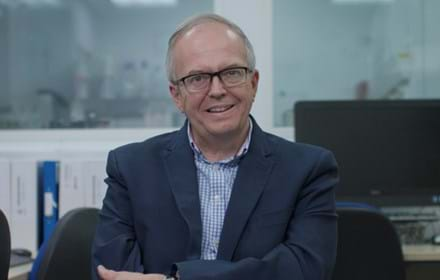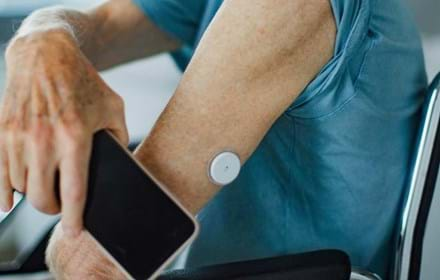
The future of diabetes research is in safe hands - Blog report from Day Three of the European Association for the Study of Diabetes annual conference
Promising young researchers provide evidence that there is still work to be done for the next generation of diabetes studies, finds DRWF Research Manager Dr Eleanor Kennedy reporting from home from the third day of the 56th annual meeting of the European Association for the Study of Diabetes, this year presented as a virtual event.
When EASD launches its programme for the upcoming conference, it is always a little daunting and I wonder how I’m going to cover everything, listen to all the talks, see all the who’s who in the diabetes world present.
Following events on social media
In truth, I can’t. However, the advent of social media has made everything simultaneously easier and much more complex. I can be sitting quietly in one lecture theatre or, this year, listening remotely to one session, when Twitter suddenly explodes with activity. This is great because, by following this out the corner of one eye, I can keep up with two sessions at the same time.
Dr Eleanor Kennedy, DRWF Research Manager logging on to this year's virtual EASD experience
However, I am then wracked with FOMO, this new-fangled shorthand for the fear of missing out. Should I be there and not here? What ground-breaking research is being reported in another session that I’ve not been there to witness and all my reports of it will only ever be second-hand?
FOMO? Day Three of the EASD annual meeting is a great example of this
But, at 7.30 in the morning (BST), when I could be at a session on The pancreas in health and in diabetes or a parallel talk on Advances in the pathogenesis and treatment of diabetic complications: going beyond the usual, or a third on Empagliflozin for the treatment of chronic heart failure and a reduced ejection fraction in patients with and without diabetes: new results of the EMPEROR-Reduced trial, it’s an easy choice for me.
I log onto my laptop and watch the Rising Star Symposium, one of my favourite sessions every year.
EASD Rising Stars
The EASD Rising Star Symposium aims to identify promising and innovative young researchers who are developing their research activities in Europe. Selected candidates have the opportunity to present an overview of their past and ongoing research activities during a multidisciplinary research symposium at the EASD Annual Meeting and receive a commemorative diploma in addition to a research fellowship to the tune of 30,000 Euros each (around £27,200), payable to the recipients’ institutions.
The objective of the research fellowship is to encourage innovative research in the field of diabetes and, as the name implies, to identify those who will take over the reins of diabetes research in the coming years.
Sweden, Spain, France and the Netherlands are all represented and, pleasingly, 75% of the researchers are women.
Recreating the pancreas
Mimicking the pancreas microenvironment and prevent rejection within islet transplantation device is one of the talks in this session. Successful islet transplantation, as the speaker explains, relies more or less on what we all rely on – a good supply of oxygen, the right nutrients and, of course, plenty of opportunities to connect and communicate. Using so-called extracellular matrix, which can be used to wrap the islets up and, thus, protect them from the outside world where the immune system lurks, Dr Alexandra Smink from the Netherlands has designed a device capable of communicating with this outside world but doing so safely, in order to get the nutrients, oxygen and other molecules that the islets need to survive.
The next steps are to work on providing islets or insulin-producing cells derived from stem cells inserted in these little pouches of extracellular matrix under the skin, to encourage blood vessels and nerves to interact with them and be able to treat more people with type 1 diabetes with less donated pancreatic material.
The whole session, as always, is a real treat to be a part of and I leave it confident that the future of diabetes research is in safe hands.
Should I stay or should I go?
From here I race around this virtual world looking for my next session and I settle into another of the EASD’s Prize Lecture awards – this time the 55th Minkowski Lecture by Professor Gian Paolo Fadini.
Cryptically entitled Should I stay, or should I go? The bone marrow and stem cell traffic in diabetes this was an elegant and beautifully presented talk on the role of circulating haematopoietic stem/progenitor cells (fortunately abbreviated to HSPCs).
Stem cell research in diabetes presents new questions for researchers
The levels of these cells, found in the blood, are known to be decreased in diabetes. And a shortage of these cells in the blood has been attributed to an impaired release of the cell type from the bone marrow. But why is impaired stem cell mobilisation in diabetes an issue? And could diabetes-related stem cell “mobilopathy” actually be considered as a complication of diabetes?
It’s an interesting talk and one that stimulates a lot of conversation and debate with the online audience. A shortage of HSPC predicts adverse diabetes outcomes. Such a shortage depends on impaired mobilisations and this phenomenon, termed “mobilopathy”, is mechanistically linked to inflammation. Yet forcing HSPCs out of the bone marrow doesn’t help, so do the stem cells in the bone marrow need to be re-educated? Can specific correction of inflammation and “mobilipathy” improve outcomes? And will this lead to a whole new field of research looking at the interplay between stem cell mobilisation, inflammation and metabolism?
There is still more to discover
As always at conferences like this, I am amazed by how much we know at a very molecular and cellular level, but also how much we have yet to unravel in the field of diabetes. And I look forward to watching this particular strand of research interest gather momentum in the next few years.
Read Lockdown guidance for staying home and safe for people living with diabetes during Covid-19 pandemic
Read How people with diabetes could become more ill if diagnosed with Covid-19
DRWF operations during the Covid-19 health crisis
The DRWF team is working remotely. Covid-19 guidance, particularly where it aligns or impacts with diabetes guidance, is shared as quickly as possible through the DRWF website and social media channels with the aim of making it as easy to understand as possible and a reliable source of latest news.
Further reports to follow – visit DRWF news page
Support DRWF by making a donation here
Find out more about DRWF-funded research here
Find out more about DRWF fundraising here
For latest update follow DRWF on Facebook, Instagram and Twitter
To receive the charity’s latest bulletins as they become available, please sign up here
Read DRWF diabetes information leaflets here
Join the Diabetes Wellness Network here
Recent News


